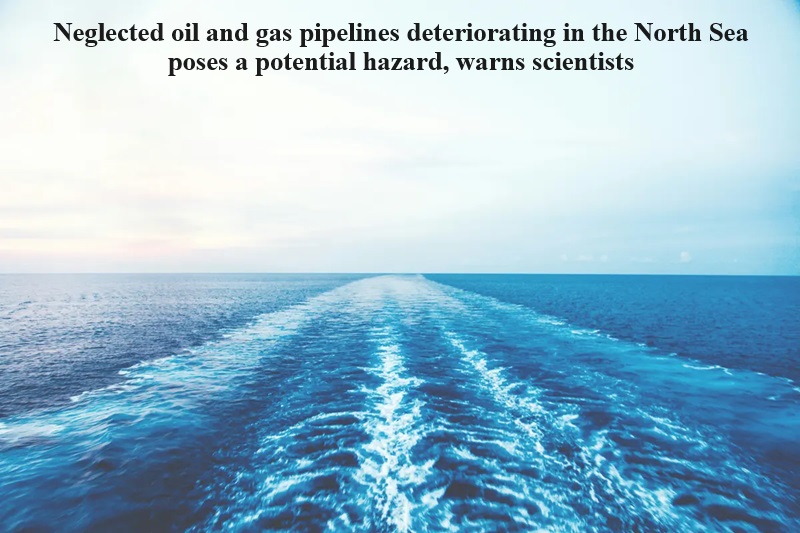
Scientists caution that neglected oil and gas pipelines deteriorating in the North Sea pose a potential threat due to the discharge of hazardous substances like mercury, radioactive lead, and polonium-210, notorious for its involvement in the poisoning of Russian defector Alexander Litvinenko.
Mercury, a highly toxic element naturally present in oil and gas, accumulates within pipelines over time and is eventually released into the sea as corrosion progresses. This metal adheres to the pipeline’s interior and, as the pipelines degrade, is gradually discharged into the surrounding environment. Methylmercury, the most toxic form of mercury, is emitted by these pipelines, with the possibility of other forms transforming into it. The Minamata Convention on Mercury warns globally that heightened mercury levels in marine mammals, such as dolphins, whales, and seals, can lead to adverse effects like “reproductive failure, behavioural changes, and even death.” Seabirds and large predatory fish, including tuna and swordfish, are particularly vulnerable to mercury contamination.
Lhiam Paton, a researcher at the University of Graz’s Institute for Analytical Chemistry, has emphasized the significance of the mercury pollution issue, underscoring that even a slight increase in sea mercury levels can have a considerable impact on apex predators.
With approximately 27,000 km of gas pipelines in the North Sea, experts estimate that the metal concentration in the sea could rise by anywhere from 3 per cent to 160 per cent above current levels. Unlike in some countries where regulations mandate the removal of pipelines following the cessation of oil wells, North Sea companies are permitted to leave them in place to degrade over time.

Post Your Comments